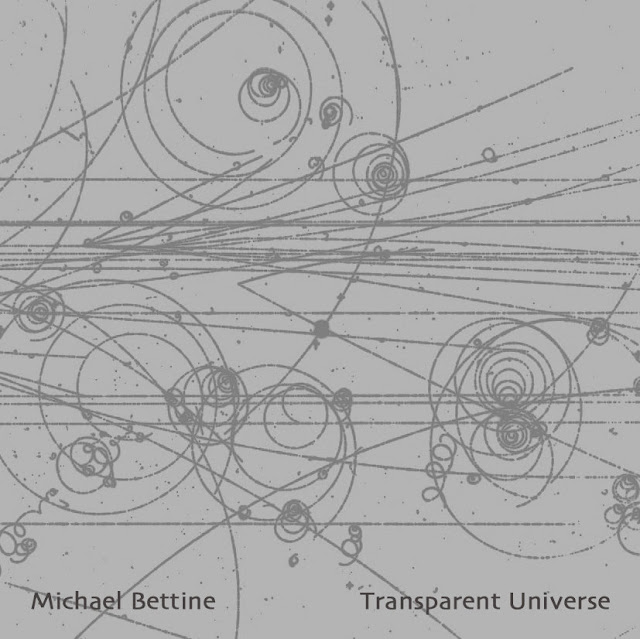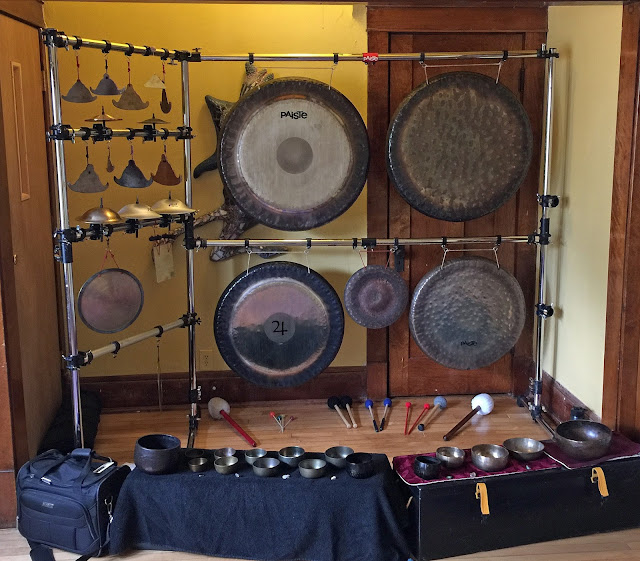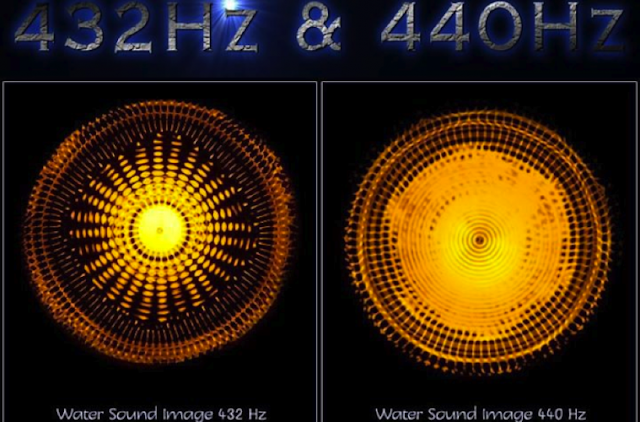Chronicles #1: Transparent Universe
2021 is the 20th year of my venturing out from playing in bands into playing and recording solo percussion music. In this blog I plan to take a look back over the many recordings I’ve made in the past 20 years. This will not be in chronological order—I’ll just pick albums out by what I feel like investigating.
First up is a release from exactly 10 years ago on April 13, 2011: Transparent Universe. (You can download or stream the tracks here)
Ensemble vs Solo
All of my previous albums had been solo recordings in the truest sense: the music was all recorded live to 2-track with no overdubs. Essentially, I wanted to capture the sound and feeling of me playing a live concert (and also have the ability to recreate the same music on stage). So all songs were written and well rehearsed before entering the studio, where time is money. I always made sure to have a well formed game plan and generally stuck with it. This allowed me to get my previous studio albums each recorded in one session of usually 8-12 hours.
By this time, I had invested the money I would have spent on studio time for my next album, into putting together my own very modest home studio setup. This allowed me the luxury of time—time to just create—and not to have to worry about the clock on the studio wall. I had produced all my previous recordings, so I knew my sound and what I want to achieve better than anyone else. I also knew how to engineer and mic the gongs and percussion (from paying attention at my previous recording sessions over the past 40 years) to get the sounds I wanted. So it made a lot of sense to do it all myself and create this from the ground up as I went along.
The idea was to create percussion ensemble music, writing and over-dubbing the parts in real time—this was not music I would ever play live. The studio became my instrument and I was constructing things much like using building blocks. Each track took a day or two to record.
The influences for this music were composers like John Cage, Morton Feldman, and Iannis Xenakis; as well as Asian Gamelan & Kulintang music. Each track started as a mood or idea, and was built upon with succeeding tracks. I tried to move quickly and not belabor a part or over think things (I knew from experience that over thinking could kill a good idea). The music was built on instinct more than pre-planning. I wanted to capture that raw energy and spark you feel the first time you play something, the vibe at the moment of creation. Thankfully, the muse was with me.
The Idea of Relative Time
All tracks (except Black Moon Over Winter Sky, Sundiver & Transparent Universe which are all like to 2-tracks) were recorded to a click track. This was something completely new for me, coming from just playing/recording things as a live solo performance. But I needed a click in order to layer different tracks and also to be able to move parts around and still keep them in sync with each other. The type of click I used (and still use today) was a drum set track, usually some sort of funk beat. This gave me a groove to work with and against, rather than a sterile metronome click, which I hate. It also helped keep the overall feel of things a bit more funky.
Perfect Time vs Relative Time
In laying down multiple gong, marimba, or hand drum tracks, I used an idea I call relative time. My feeling is that if I laid everything perfectly on top of the beat/click and quantized the notes, it would have a sterility to it and sound mechanical. In recording ensemble music, I wanted it to ultimately sound like a group of people playing together in a live session. When people play live together, there are subtle timing differences that make the music sound human. Relative time means that tracks could be “in time,” but don’t have to be exactly on top of/with the beat/click. The 1st track was laid down exactly with the click to create a foundation. But on subsequent tracks, I would allow the time to wander a bit, drifting ahead of, or behind the beat, or even moving back and forth. The effect is two-fold:
- the overall sound of the tracks is thickened, as the rhythms take up more space.
- there is the effect of phasing as one rhythm moves against another.
There’s also another effect I like, in that sometimes the rhythms seem to be chaotic, only to resolve into synchronization, just to move back to chaos. I personally find this rhythmic approach interesting because this friction between the rhythms has an appealing energy to me. So everything here is “in time,” it’s just a matter of perspective.
The Tracks
In keeping with the album’s title, many of the tracks have been inspired by my interest in physics and astronomy, as well as thoughts/moods/images of the Sun and stars. Indeed, the Sun is the giver of life on this planet and has been a powerful symbol throughout history. Note that all sounds (except for a few effects, like the opening wave sound in Every Island A Path), are acoustic percussion played by me in real time. There are no sequencers or electronics used.
Rising: The opening track is about just that: opening, unfolding, rising. I was thinking of a Sunrise or a movement from nothing to something. This is 6 layered single gong tracks.
Tribes: The idea here was to create a big group tribal feeling, and I wanted to combine African style drumming with Gamelan gongs. I doubled gong & hand drum parts using relative time. There are 7 gong tracks and 4 drum tracks:
Vesica Piscis: This track was originally written in 2002 as a solo Kulintang piece for my Labyrinth album. It was back in 2005 that my friend, Michael Paiste, suggested putting some drums to some of the solo gong music albums I had sent him. I’ve been fascinated by Kulintang Ensemble music and wanted to do something along those lines, so this piece seemed like a good one to expand. While I don’t have have the full array of Kulintang Ensemble instruments (I just have the 8 Kulintang bossed gongs), I have enough percussion to make close substitutions for the other instruments. So for the Agung, I used Iron & Bronze Gamelan gongs. For the Babendil, I used a Thai gong, and for the Dabakan drum, I used doumbeks. I didn’t use anything for the Gandingan ‘talking gongs.’ It’s important to note that I have not tried to recreate an indigenous Kulintang song, but rather have created my interpretation of a Kulintang Ensemble in the same spirit.
Archetype: A primal beginning, the first rhythm going back to the beginning of mankind, of time. 8 tracks of layered muted gongs all playing the same straight 16th note pattern in relative time. The rhythm grows and evolves.
Cloud Chamber: Thinking about sounds and how they mix, flow and bounce off of each other. Inspired by how charged particles, X-rays, and gamma rays leave trails in a cloud chamber (see the cover).
Black Moon Over Winter Sky: A percussion quartet. 4-tracks, each with gongs & bell cymbals or sound plates. The idea was to improvise as a quartet, reacting to the previous track/s. The mics were set to a stationery position, and each of the 4 percussion stations was set up in a different area of the studio in relationship to the mics to give the effect of 4 live performers spread out on a stage.
Every Island A Path: A 2-part song reflecting on choices we make, leading us down different paths. The 1st part is a powerful mix of sounds. It’s 14 separate tracks.
The 2nd part brings in a whole different vibe using a multi-layered wooden marimba instead of aluminum sound plates. There are 4 marimba parts, drums, & percussion.
Corona: Inspired by recent photos of activity on the Sun. The idea is to capture a feeling of the swirling plasma, solar flares, and ever changing atmosphere of the Sun. This piece features 5-tracks of bowed Gongs.
Solstice: So named because it was recorded on the Winter Solstice in December 2010—I find the Solstice a particularly auspicious time. I was looking to capture the spirit of a Winter Solstice Celebration, celebrating the change into a lengthening day and the coming of Spring in a few months. I was inspired by an antique steel drum (60-70 years old) that someone had given me. The drum was made by a farmhand on the farm they grew up on, is quite rusty and not at all set up like a modern steel drum. The tuning is also a bit suspect, but since no other tuned instruments were used, it worked out fine.
L'Eterno Movimento: Another solo Kulintang piece that I rearranged for percussion ensemble.
Sundiver: I had just finished reading the book, Sundiver, by David Brin (the 1st of 6 Uplift books) and felt like it was an appropriate title for another piece inspired by the Sun. This one features a drone on a 32˝ Symphonic gong with a drum set groove layered on top of it—no click. There are 4 other tracks of percussion sounds. I recorded this in a unique way: for each track, I only listened to the drone track and reacted to it. It wasn’t until I started to mix all the tracks that I heard any of them together, so this was more of a random chance activity between all the parts.
Transparent Universe: Recorded in real time to 2-track for a radio interview, this is multi-gong piece brings the album to a conclusion.
Sundiver (2021Remix): I've always loved this piece, but it was recorded under less than ideal circumstances. While going through my files, I pulled out the original master tracks from the recording session and gave them a listen. My studio setup has come a lone way in 10 years, so I went over this and finally gave it some bottom end it was missing. I also discovered 2 unused tracks (a rarity for me, as I almost never record extra tracks) which I will put on some future release.
Ten years later, I'm still pleased with this album and the way my ideas turned out. It was a fun experiment that has become my standard way of recording multiple percussion tracks by myself. My latest recording, The Sea We Swim In, was recorded in much the same manner.
~ MB
Chop Wood / Carry Water / Play Gongs




Comments
Post a Comment